The World of the Afterlife,
Yeomraguk(the Underworld)
and Bulgukto(Buddha Land)
Humans have believed in the afterlife for a very long time.
They were wise people who survived in the harsh nature, but the world was full of things they could not understand.
So, they began to imagine what was under the ground, above the sky, birth and after death.
Thus, funeral customs began around 50,000~60,000 years ago, in the Paleolithic age.
Around 40,000 years ago, pollen from chrysanthemum flowers was found near the fossil of a child in the Cheongju Durubong Cave,
indicating that there was a ritual of offering flowers to the dead.
After the Neolithic Age, nations were formed during the Bronze Age, and with the start of the Iron Age,
the Korean Peninsula entered the Three Kingdoms Period.
Over a long period of time, the objects of faith expanded, and various funeral customs arose as a result.
Buddhism was also introduced to Korea during this time.
The Introduction of Buddihsm
Belief Became
Faith and Art.
The Three Kingdoms each successively embraced Buddhism.
Buddhism, which was well harmonized with the folk beliefs that had been held since ancient times,
provided comfort to people who were anxious due to the wars.
As Buddhism spread among the populace, and the country's laws and systems began to be systematized.
Thus, the world before birth and after death
that we had imagined gradually took on a systematic form and became increasingly complex.
People began to believe that if they did something wrong, they would be judged in the afterlife,
but if they did something good, they could be reborn.
Buddhas and Bodhisattvas to help and enlighten people began to appear around us one by one.
Thus, Buddhism became the closest and most influential religion
that accompanied our lives from the Three Kingdoms period to the Goryeo period.
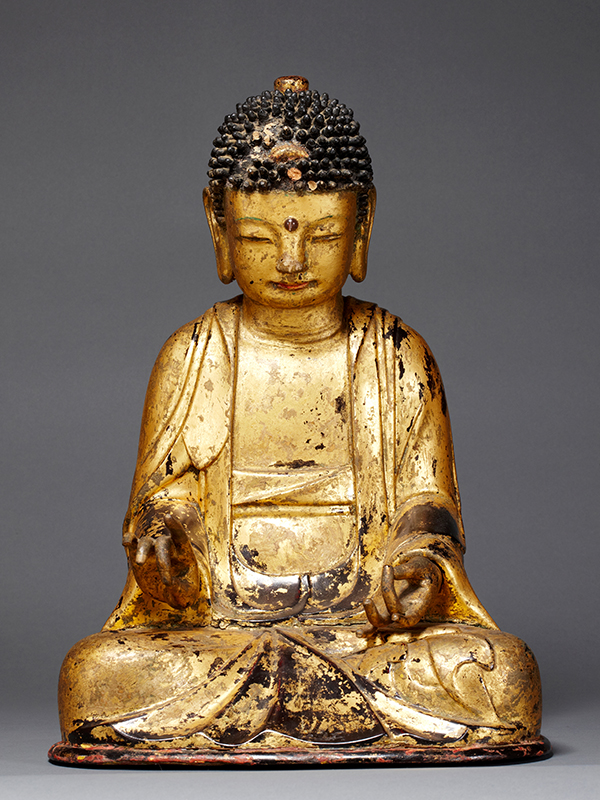
Wooden Seated Amitabha Buddha

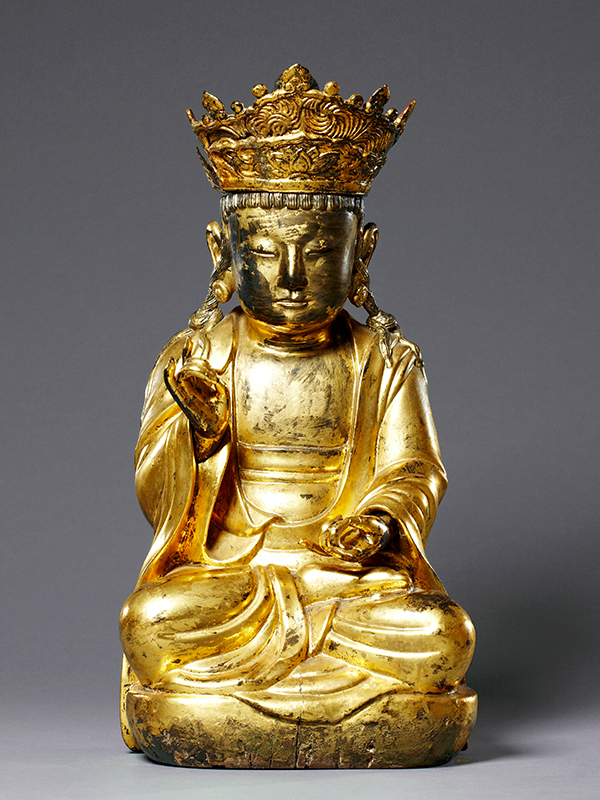
Encounter the Mythological World
of “along with the Gods”

As faith became systematized, ancient people began to create more specific designs for the world they had imagined.
Legendary stories spread widely of kings who ruled the heavenly kingdom, and of their sons or grandsons who came down to establish nations.
They talked about hope by painting Buddhas who lived in the Bulgukto and bodhisattvas heavenly kings who helps suffering beings and fought off demons.
And they were afraid of the Hwangcheon River, the road to the underworld, and the Yeomraguk beyond the river, the judges, and the Grim Reaper.
This imagined world gradually became vast and diverse over time. This amazing imaginary world has been revived through modern media like "Along with the Gods," still captivating us today. It shows how intricate, concrete, and vast their imagination was at the time.
The road to the afterlife and Yeomraguk
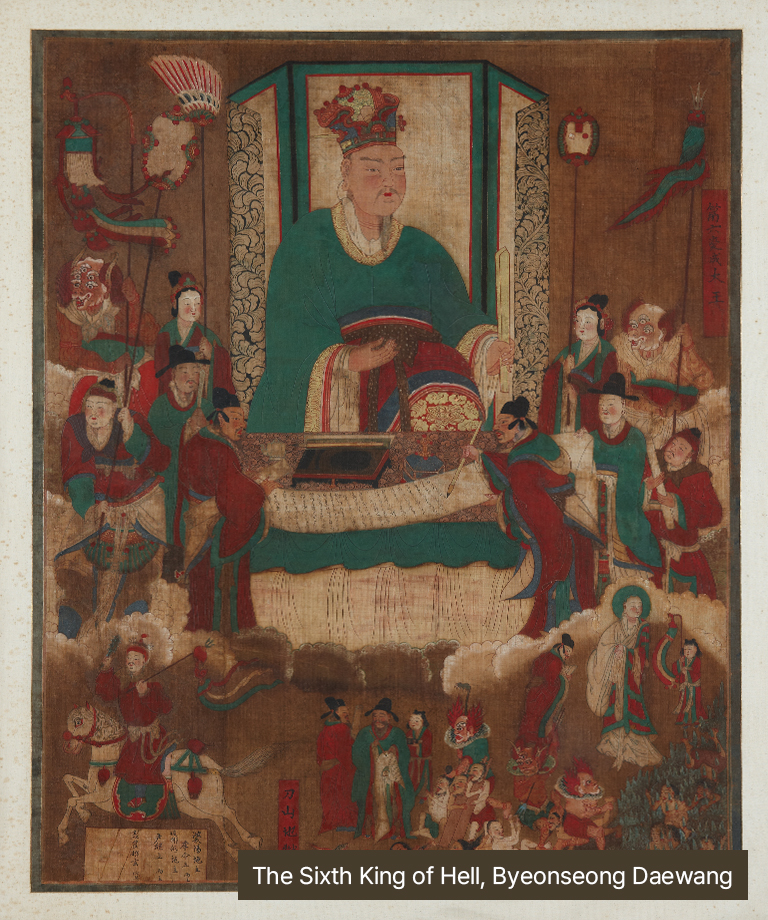
The World of Buddha,
the King of Heaven
and the Western Paradise
Old stories created by people were passed down through word of mouth and sometimes preserved through paintings and sculptures.
The statue of four kings, which can be seen at the entrance of temples or the painting <The Ten Kings> in the Myeongbujeon,
displays a remarkably detailed part of the world that was depicted by ancient people.
The Ten Kings, mentioned in the Buddhist scripture, <The Sutra of The Ten Kings>, are ten kings who judge the degree of sin for the deads in the afterlife.
The souls who crossed the Hwangcheon River are judged in front of the ten kings while looking back on their lives in three dimensions.
Sometimes, sins are forgiven, but sometimes, souls must pay for their sins in Hell. The Hell depicted in the paintings is so vivid and terrifying.
Through the imaginary world in the painting <The Ten Kings>, we are reminded of the importance of doing good deeds and avoiding evil deeds.
View media art video
A Brilliant Day
at Byeokrando in Goryeo
Located at the mouth of the Yesung River,
next to the capital of the Goryeo Dynasty, Kaesong, Byeokrando was an international port
that many foreign merchants visited to find unique Goryeo products
such as Hwamunseok (Korean traditional mat), najeon chilgi (Korean traditional lacquerware inlaid with mother-of-pearl), Insam (Korean ginseng), and paper.
The products made by Goryeo craftsmen and artists, with their exquisite taste and artistry, were so amazing that they attracted merchants from around the world,
who then spread Goryeo's products and culture as far as Southwest Asia.
Through this process, the name "Goryeo" became widely known, and it eventually evolved into the modern term used to refer to Korea: "Korea" (코리아).
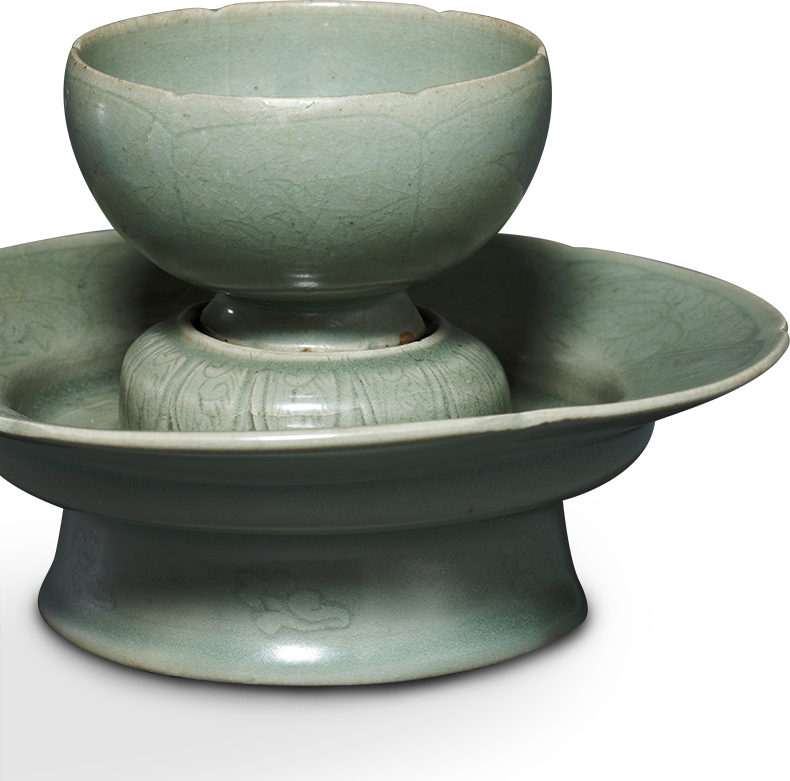
The Day When Celadon Arrives
Celadon was mainly made in Gangjin and transported to Baekryangdo by ship.
The nobles of Gaegyeong and merchants from various countries eagerly awaited the arrival of the ships in Byeokrando.
Chinese people highly praised Goryeo celadon as "there are ten things in the world that cannot be imitated,
and one of them is the color of Goryeo celadon" , and it was because Goryeo celadon was on board the ships.
Nobles in Goryeo enjoyed tea with their close associates as a daily routine, and they preferred exquisite and elegant celadon teacups.
Celadon teacups were valuable items even used in the tombs of nobles.
Women ordered small celadon containers to store cosmetics, and noble students who study wanted celadon brush holders.
Even at temples, celadon tea cups and incense burners were considered the finest.
Moreover, even Chinese and Arabian merchants were competing to obtain high-quality Goryeo celadon.
Good quality celadon was treasured more than gold and received exceptional treatment as an excellent treasure at that time.
In fact, it is said that celadon was first made in China.
However, in the 10th century, they succeeded in making celadon in one of the kilns in Gangjin.
It was made in just 200 years, while China had been making celadon for over 1,000 years.
What's even more surprising is that in the 12th century, celadon made in Goryeo became the world's top-level pottery.
Manufacturing Technique
of Inlaid Celadon
The main reason why Goryeo celadon gained a global reputation is the unique technique used, which was called the inlay.
Inlay is a craft technique that involves carving design into the surface of an object and embedding materials of different colors or properties within,
and is said to have been popular among the Goryeo people for metal craft and najeon lacquerware.
Goryeo artisans applied this technique to celadon, resulting in a unique and distinctive inlaid celadon.
It's a truly remarkable amazing learning and application.
Even now, we boast the world's best in hand dexterity, learn quickly,
and have an artistic and creative flair that makes for amazing transformations.
I think it's because we still have the blood of Goryeo craftsmen running through our veins.
Production Process of ceramics
Go to pottery video
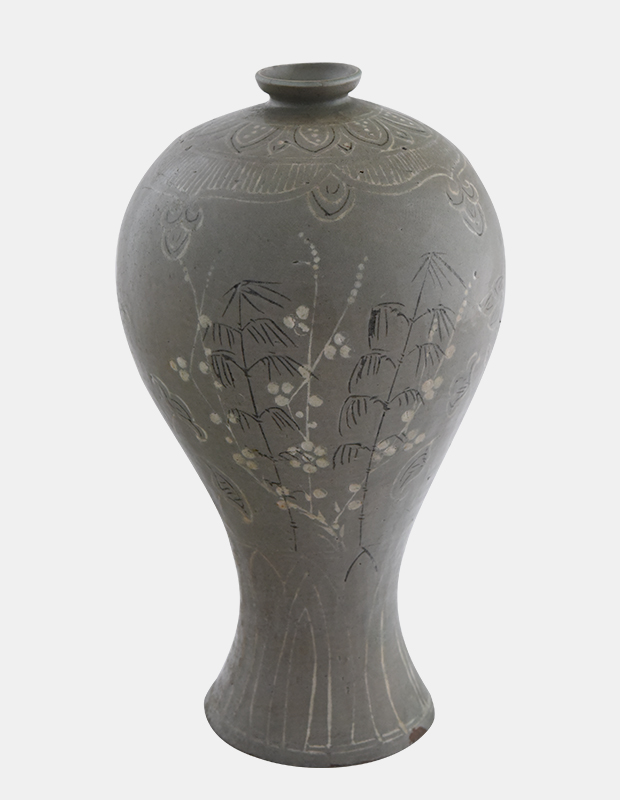
Celadon prunus vase with inlaid plum, bamboo and lotus design

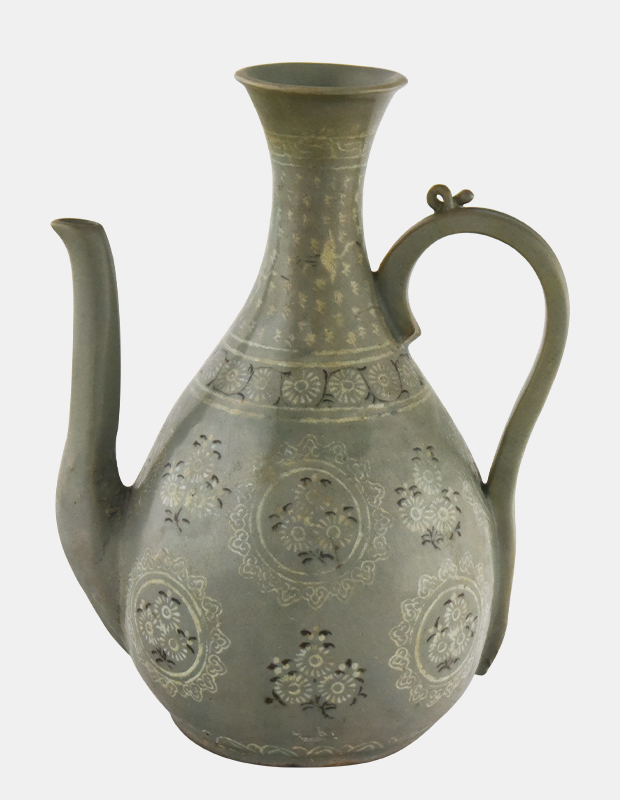
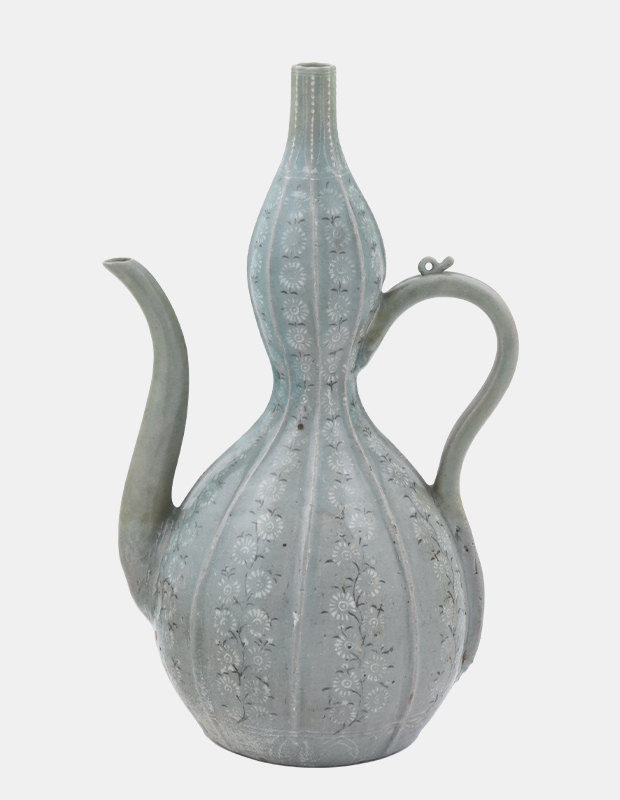
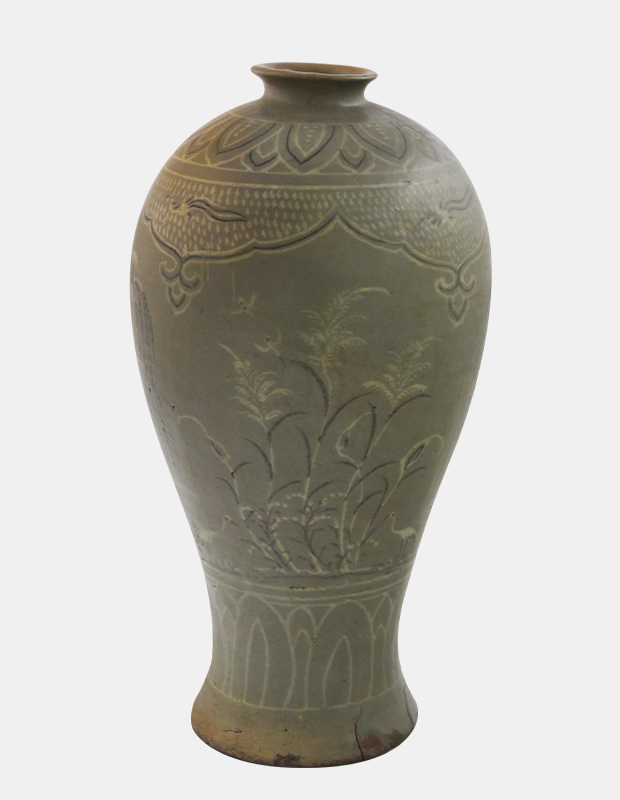
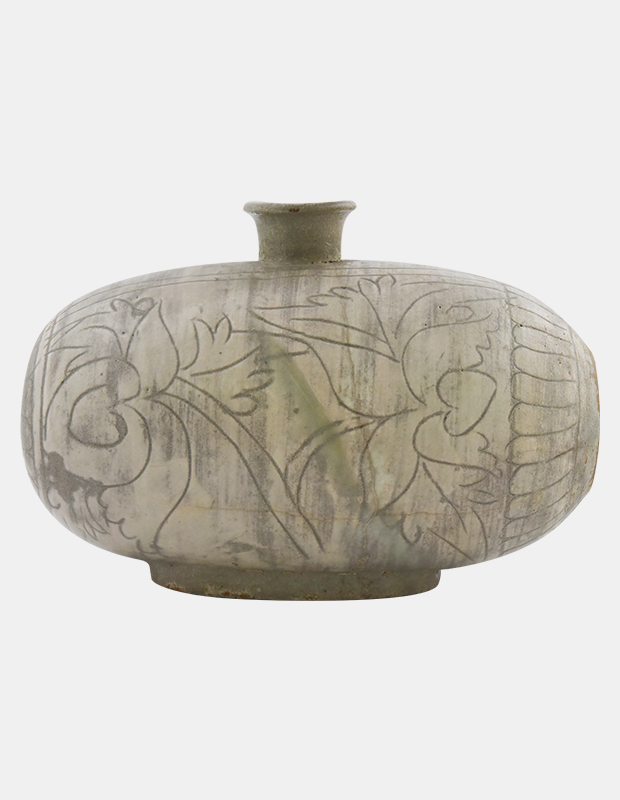
Buncheong barrel-shaped vessel with incised peony design

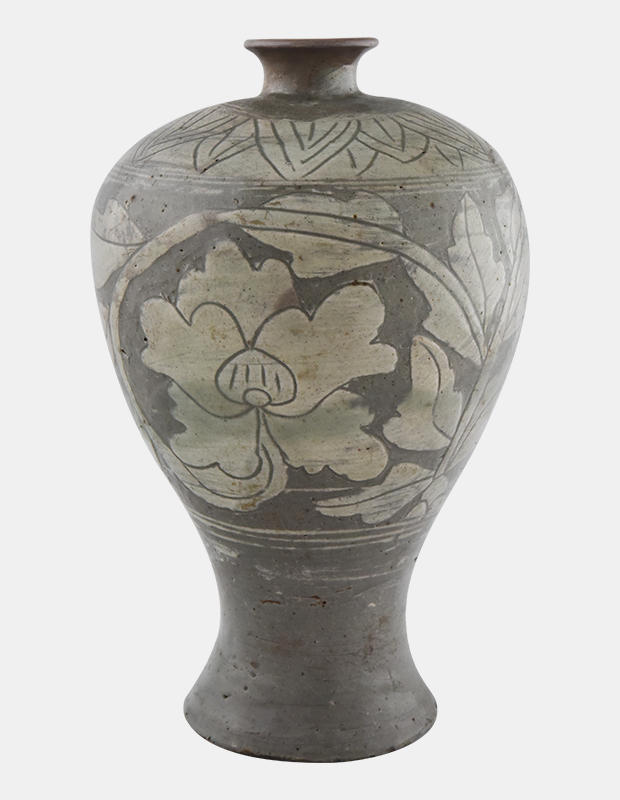
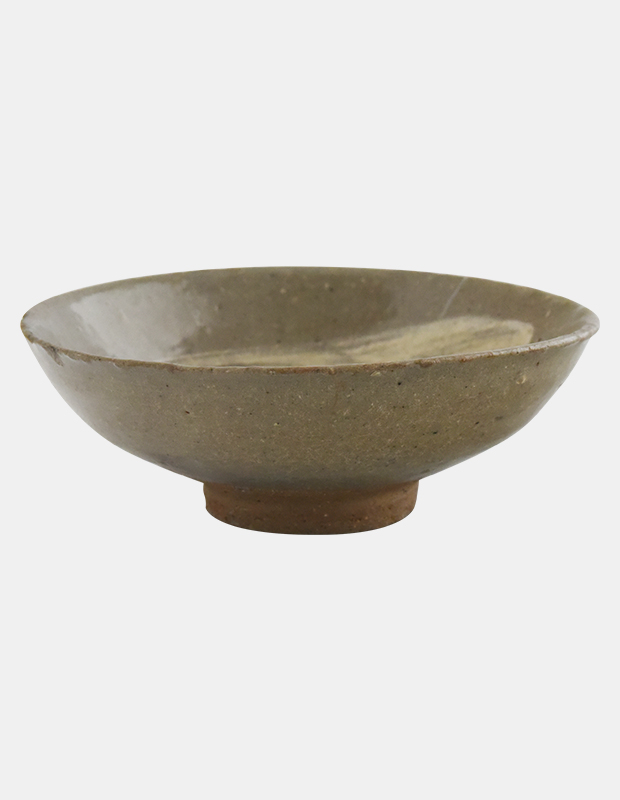
A Day in Joseon's Potters,
Buncheong Ware
During the chaotic times of the late Goryeo Dynasty, potters scattered across the country made celadon from the coarse clay that was readily available around them.
Of course, the celadon they made was too dark in color and not as pretty as the celadon before.
Potters began researching and experimenting to improve the color, and the result was Buncheong Ware made by forming the vessel,
applying white clay to the surface, and painting a variety of whimsical designs.
This ceramaic, which appeared during the first 150 years of the Joseon Dynasty, was known as 'Bunjanghoecheong Ware', or 'Buncheong Ware' for short,
because it looked like white paint on celadon.
It is an artifact that gives us a glimpse into the skillful craftsmanship of our ancestors.
Buncheong Ware was made in a variety of ways, just like its birth.
There were 'Inlaid buncheong ware', which used the inlay technique of celadon, 'Inhwa buncheong ware', which used stamps to create designs, 'Bakji (Johwa) buncheong ware',
which used scratching or digging to create designs, and 'Guiyal buncheong ware', which used a brush to apply white soil.
Later, the 'Dumbung buncheong ware', which was made by dipping the entire ceramic into white clay,
and the 'Chulhwa Buncheong Ware', which was made by painting with iron pigments, also appeared.
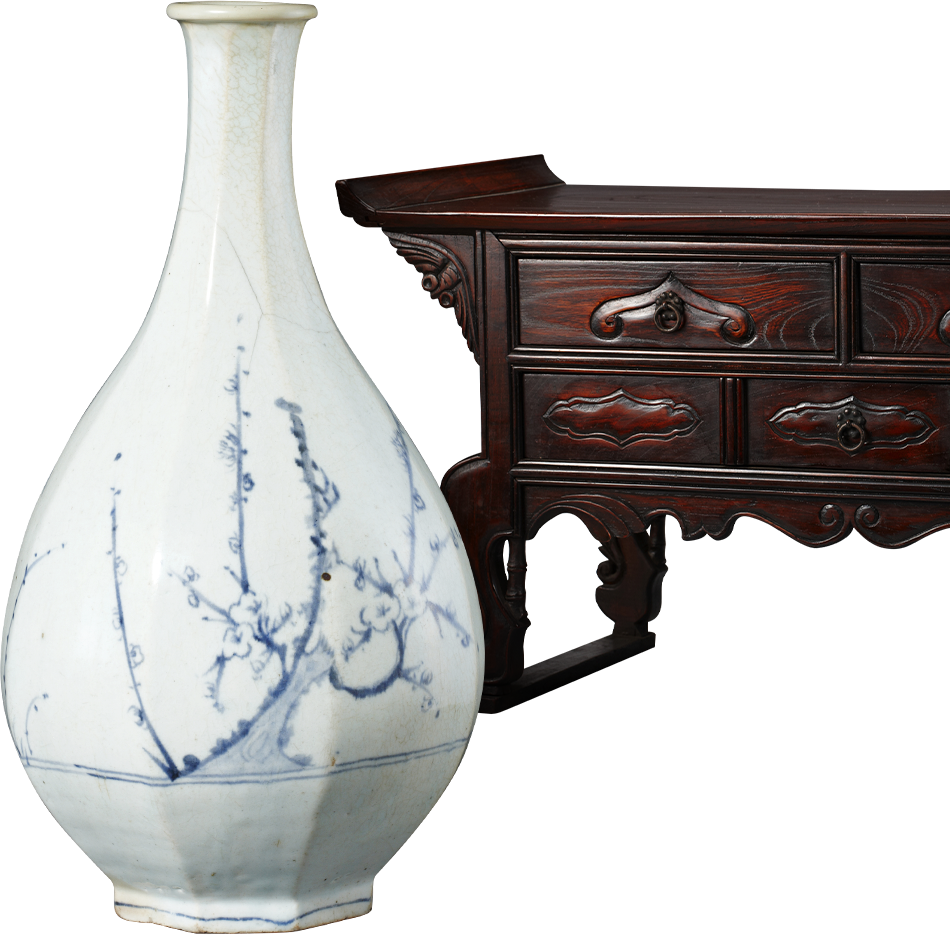
A Day Dreamed by a Joseon Scholar,
White Porcelain
When we think of the Joseon Dynasty, we think of a scholar reading books under the moonlight.
In the imagination, the scholar's room is filled with bookshelves full of books and simple furniture,
and it seems that white porcelain is placed on top of them as if they are shining.
Such simplicity and nobility is the ideal of the Joseon Dynasty a scholar's room.
Like the characters in the old stories, they dreamed of days spent immersed in a life of reading and hermitage rather than the hustle and bustle of everyday life.
The style of white porcelain, with its solid, flowing lines and sleek, refined patterns on a clean white background, could be said to reflect the ideals of scholars at the time.
Perhaps its simplicity has become our own style, neither too colorful nor too rough, and is spreading in the name of the Korean Wave.
Superimposed on that is a picture from a few hundred years ago, when white porcelain traveled to Japan and became the origin of Japanese ceramics.
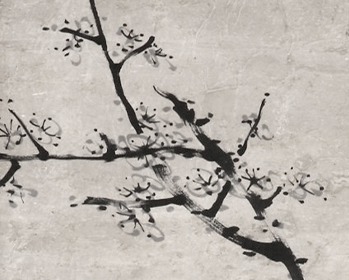
Plum
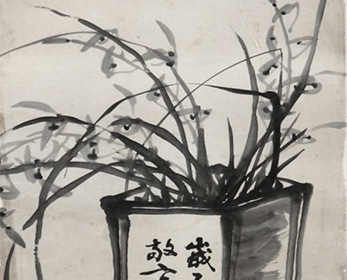
Orchid
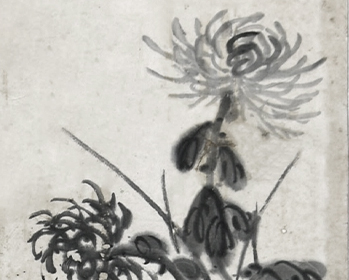
Chrysanthemum
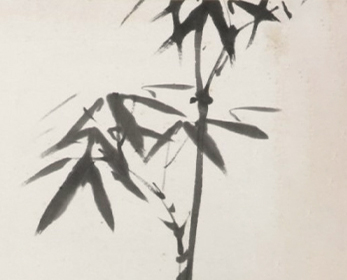
Bamboo
White Porcelain
and Four Gracious Plants
White porcelain's charm of frugality and restraint suited the tastes of the Joseon royal family and nobles,
who were committed to a Confucian society.
King Sejong the Great made white porcelain the official vessel of the palace,
and the era of white porcelain began under the attention of the royal family.
White porcelain spread to the homes of noble families and commoners alike, and scholars painted their favorite things on the white porcelain.
In particular, plum blossoms, orchids, chrysanthemums, and bamboo were often depicted.
The plum blossom, which is the first to bloom in the early spring cold,
the orchid, which looks fragile but carries a rich fragrance far away,
the chrysanthemum, which does not lose its color in the late autumn frost,
and the hardy bamboo, which does not lose its green color in the mid-winter cold,
were all things that scholars wanted to emulate.